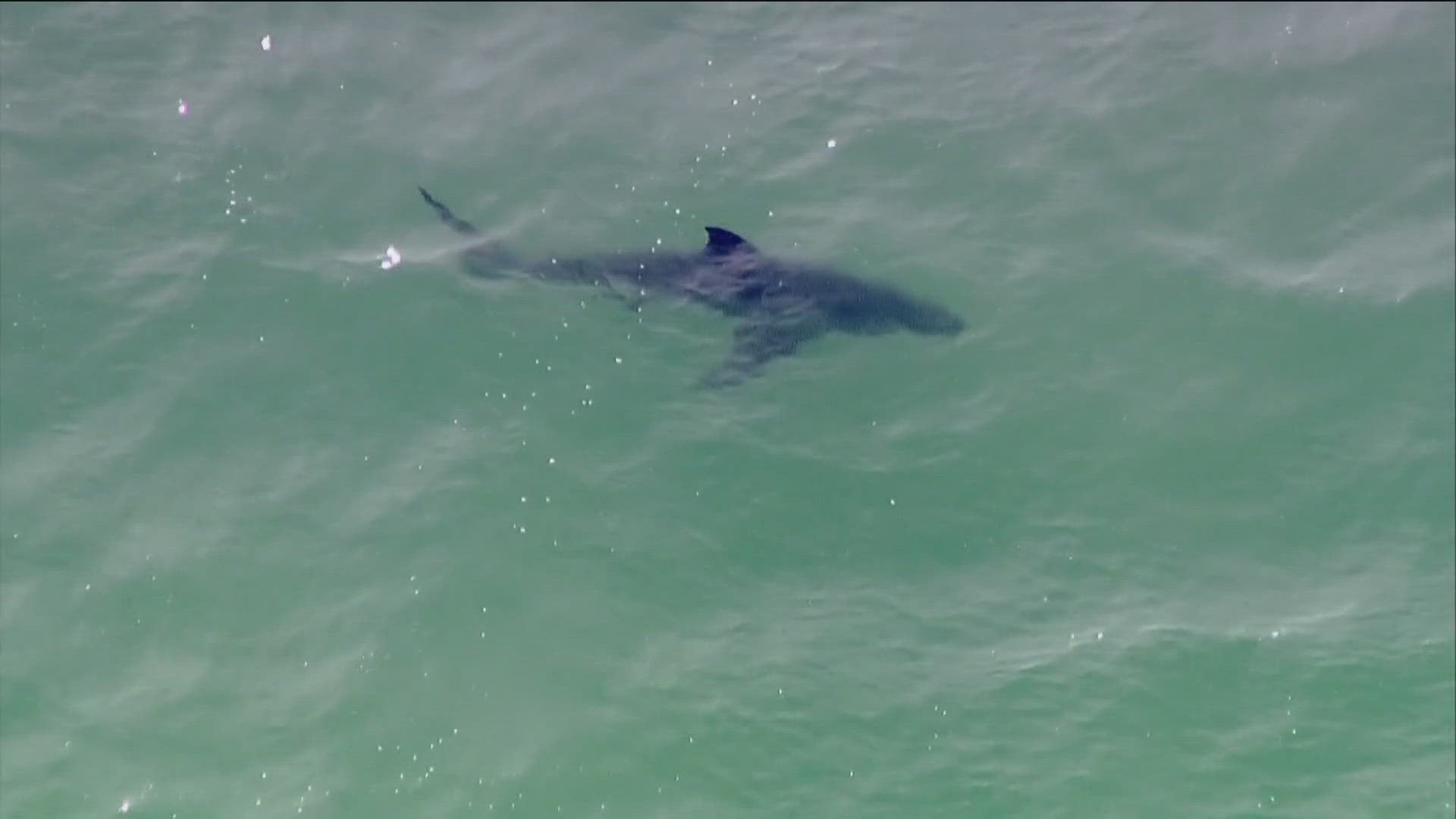SAN DIEGO — From Point Conception to Northern Baja there are dozens of nurseries for baby white sharks.
San Diego has two large populations of juvenile white sharks, extending from Del Mar to around La Jolla, according to Dr. Chris Lowe, a professor at California State University, Long Beach. These sharks have been there for about three years, growing about one foot a year, Lowe said.
"The largest population we've had for a while is off Santa Barbara," Lowe said. "That's the location where we saw 40 in one day at one beach."
White sharks became protected in 1994 as their numbers declined severely for two reasons: a combination of overfishing and overhunting of seals, their primary food, until the 1900s.
Lowe has been the director of Cal State Long Beach's Shark Lab since 1998. He said white sharks didn't receive federal protection until the 1970s.
"Since then, marine mammals have recovered better than we could have ever imagined," he said. "A conservation success working."
The white shark population has lagged behind because sexual maturity for females can take up to 35 years. Lowe said there of signs of recovery — with their main food sources in plentiful supply, the number of white sharks are rebounding.
"This isn't just a matter of people seeing them more," Lowe said. "There's actually more to see. So those pilots that have been flying over for decades have never seen as many sharks in coastal water than they have seen in the last decade."
How sharks interact with humans
The juvenile sharks live in coastal waters. Adults tend to stay around offshore islands from summer into winter, and the females come in to give birth in the spring.
"So, the question is how important are these habitats?" Lowe said. "How do they choose them? How do they interact with people, and when are they going to leave?"
These are just some of the questions the Shark Lab is working on.
"What my grad student found was is every single day juvenile white sharks were swimming right by people in the water — surfers, swimmers, stand up paddleboarders — and yet no one was bitten."
Lowe said that's because their primary food source is sting rays.
"The juvenile white sharks are feeding on things that are on the bottom, and most people are floating on the surface," he said.
The funding for the Shark Lab's research is set to run out in June. Lowe believes the nurseries show conservation is working.
"I think what's really important is that people remember that these animals coming back means we've been doing something right," Lowe said. "But we also need to remember we're guests in their home."
WATCH RELATED: Why is there a rise in juvenile Great White Sharks off the San Diego coast? (July 25, 2022)

